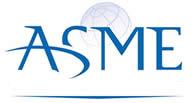The Early Years
ASME International was founded in 1880 by prominent mechanical engineers, led by Alexander Lyman Holley (1832-1882), Henry Rossiter Worthington (1817-1880), and John Edson Sweet (1832-1916). Holley chaired the first meeting, which was held in the New York editorial offices of the American Machinist on February 16 with thirty in attendance. On April 7 a formal organizational meeting was held at Stevens Institute of Technology, Hoboken, New Jersey, with about eighty engineers--industrialists, educators, technical journalists, designers, shipbuilders, military engineers, and inventors.
The latter half of the 19th century witnessed the widespread establishment schools and institutions in engineering. Engineers of the day moved easily among the concerns of civil, industrial, mechanical and mining engineering, with less distinction among them. Many groups were seeking to create organizations of specialized professional standing. But for mechanical engineers, none were devoted to machine design, power generation, and industrial processes, to a degree that was capable of projecting a broader national or international role to advance technical knowledge and systematically facilitate a flow of information from research to practical application.
The Institution of Chartered Mechanical Engineers had been successfully established in England, 33 years earlier in 1847. In the United States, the American Society of Civil Engineers had been active since 1852, and the American Institute of Mining Engineers had been organized in 1871. Holley had been vice-president of one and president of the other.
Mechanical engineers practiced in industries such as railroad transportation, machine tools, steel making, and pumping. In 1880 there were 85 engineering colleges throughout the United States, most of them offering a full mechanical engineering curriculum with the degree of M.E.
The first annual meeting was held in early November 1880. Robert H. Thurston, professor of mechanical engineering at Stevens Institute and later Cornell, was the first president. Thurston had established the first model mechanical engineering curriculum and laboratory.
Steam power drove the technology of the day: locomotives, ships, factory machinery, and mine equipment. The Corliss engine and the Babcock & Wilcox water-tube boiler were in their heyday. The first real US central power plant--Thomas Edison's Pearl Street Station in New York City--ushered in the era of great electric utilities in 1882. The internal combustion was not far from application. Conglomerates such as US Steel were formed. Industrial research laboratories, such as those at General Electric, du Pont, and Eastman Kodak, proliferated.
The Early 20th Century
ASME formed its research activities in 1909, in areas such as steam tables, the properties of gases, the properties of metals, the effect of temperature on strength of materials, fluid meters, orifice coefficients, etc.
Since its inception, ASME has led in the development of technical standards, beginning with the screw thread and now numbering more than 600. The Society is best known, however, for improving the safety of equipment, especially boilers. From 1870 to 1910, at least 10,000 boiler explosions in North America were recorded. By 1910 the rate jumped to 1,300 to 1,400 a year. Some were spectacular accidents that aroused public outcries for remedial action. A Boiler Code Committee was formed in 1911 that led to the Boiler Code being published in 1914-15 and later incorporated in laws of most US states and territories and Canadian provinces.
By 1930, fifty years after ASME was founded, the Society had grown to 20,000 members, though its influence on American workers is far greater. Just as the nineteenth-century railroad created towns and cities along its paths, its interlocking schedules led to establishment of the present time zones. Twentieth-century ASME leaders, such as Henry Robinson Towne, Fredrick W. Taylor, Frederick Halsey, Henry L. Gantt, James M. Dodge, and Frank and Lillian Gilbreth, pioneered management practices that brought worldwide reform and innovation to labor-management relations. Precision machining, mass production, and commercial transportation opened the nation and then the world to American enterprise.
The diversity of mechanical engineering can be seen in ASME's 36 Technical Divisions (plus one subdivision) and 3 Institutes. Today's structure of Technical Divisions was established in 1920, when eight were founded: Aerospace, Fuels, Management, Materials, Materials Handling Engineering, Power, Production Engineering, and Rail Transportation. Two more were formed the next year: Internal Combustion Engine and Textile Industries. The most recent addition is the Information Storage and Processing Systems Division (June 1996).
The Present
Today, ASME is a worldwide engineering society focused on technical, educational and research issues. It has 125,000 members and conducts one of the world's largest technical publishing operations, holds some 30 technical conferences and 200 professional development courses each year, and sets many industrial and manufacturing standards.
[Excerpt from ASME International-History]



